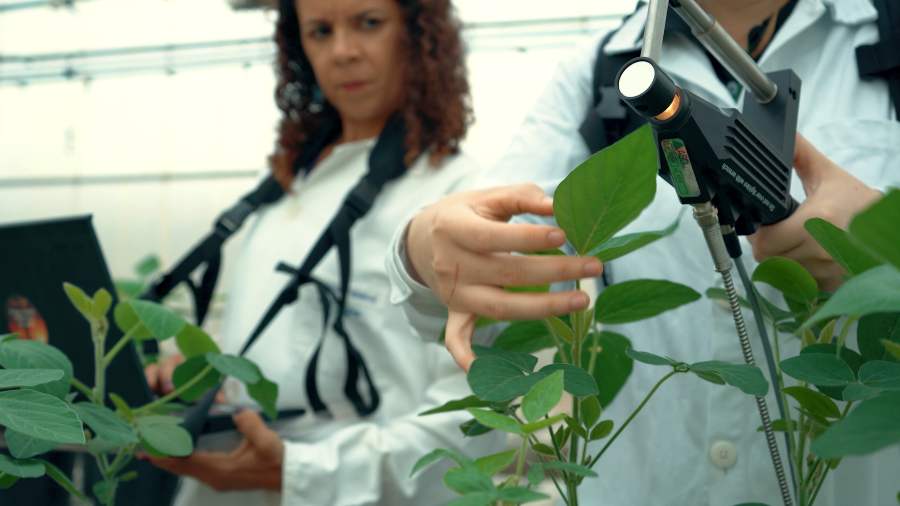Researchers identify spectral signature of greenstem symptoms in soybeans
Researchers identify spectral signature of greenstem symptoms in soybeans
Researchers from Embrapa and Mato Grosso State University (Unemat) identified the reflectance characteristics of healthy soybean plants and of those infested by the nematode Aphelenchoides besseyi, which causes green stem, a disease also locally known as “soja louca II” [crazy soy II - SL II]. Discriminating the spectral signature of plants with symptoms is a first step towards the production of a sensor to help crop management.
In the study conducted in a greenhouse at Embrapa Agrosilvipastoral located in Sinop, Mato Grosso, potted soybean plants were inoculated with different populations of the nematode that causes the disease. Then the spectroradiometry technique was used to analyze the reflectance characteristics of different groups of plants.
“We obtained signatures from healthy plants and from plants infested with different population intensities of the nematode. Those signatures, or those leaf records, are shown as ranges”, researcher Valéria Faleiro explains.
According to the researcher, that was the first step towards refining the technology so as to eventually develop a sensor that can be used in soybean crops.
“This methodology will help to speed up field monitoring, by making the process of identifying areas infested by the nematode faster and thus contributing to improved management”, she anticipates.
The continuity of the research now depends on the approval of a new project, which will allow new tests in a greenhouse and field validation.
Soybean green stem
The nematode Aphelenchoides besseyi is the causal agent of the disease that came to be known as “Crazy Soy II”. The disease occurs in hot and humid regions such as Mato Grosso, Pará, Amapá, Tocantins and Maranhão and can cause up to 100% losses in the crops.
The symptoms include the deformation of leaves, stems and pods; leaf thinning and bubbling; stems showing fluting, thickened nodes and reduced number of pods. As such symptoms are observed in the aerial parts of the plant, hyperspectral sensing has great potential to be used in their identification in the crops.
Women in Science
This study was funded by Fapemat, the Mato Grosso State Research Foundation, through the call "Women and Girls in Computing, Engineering, Exact Sciences and Land Sciences, which aimed at encouraging female participation in science. In addition to being led by a woman, the project only had girls as scientific initiation scholarship holders.
Gabriel Faria (MTB 15.624 MG)
Embrapa Agrosilvopastoral
Press inquiries
agrossilvipastoril.imprensa@embrapa.br
Phone number: +55 66 3211-4227
Translation: Mariana Medeiros (13044/DF)
Embrapa's Superintendency of Communications
Further information on the topic
Citizen Attention Service (SAC)
www.embrapa.br/contact-us/sac/


